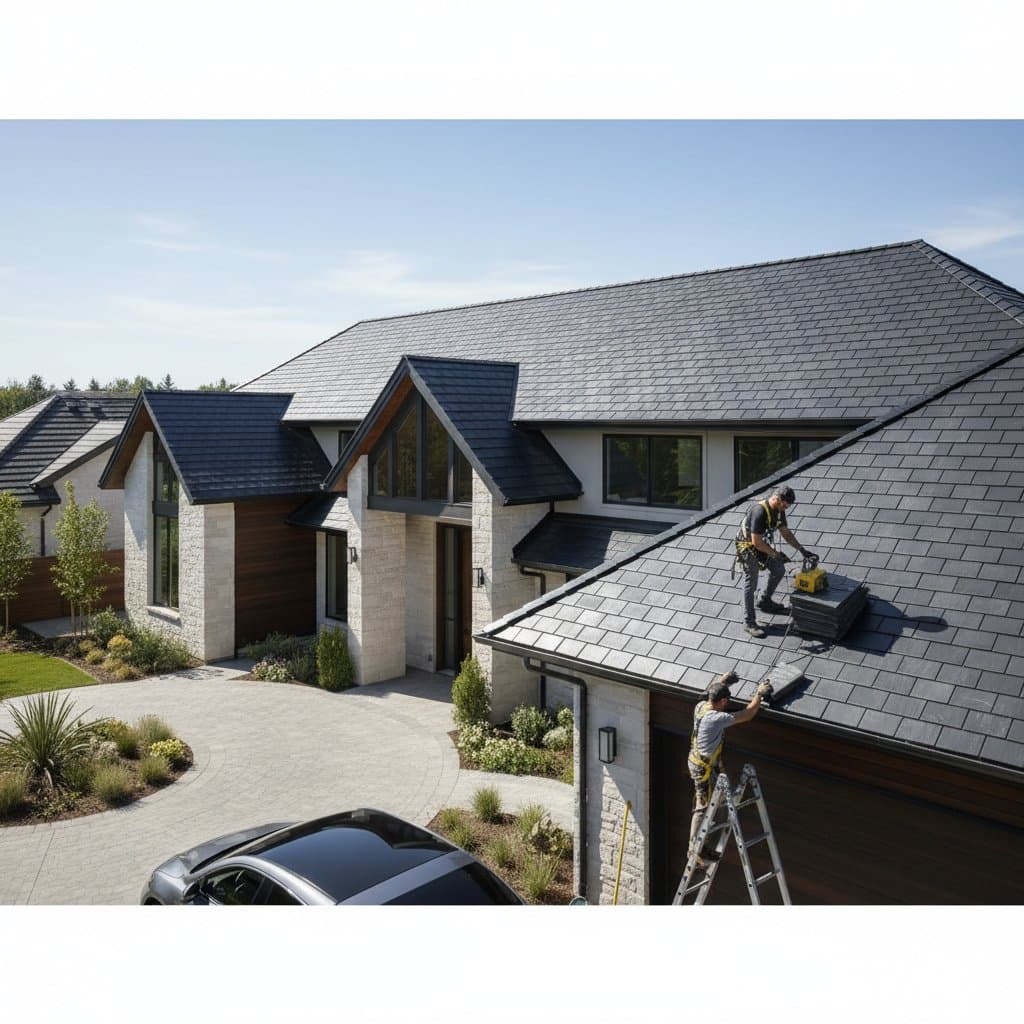Solar Shingles Narrowing the Price Gap with Traditional Panels in 2025
Solar shingles have long trailed conventional rooftop panels in popularity. These integrated systems offer a streamlined look and blend seamlessly with roofing materials, but elevated costs previously confined them to premium applications. Recent developments are changing that landscape. Homeowners now view solar shingles as a feasible option alongside standard photovoltaic setups.
Industry analysis reveals multiple factors accelerating this shift. Advances in production processes, a robust supply chain, and strategic alliances with roofing companies have elevated solar shingles toward widespread acceptance.
Evolution from Early Concepts to Reliable Systems
Building-integrated photovoltaics, known as BIPV, began as experimental offerings. Initial versions proved costly and complex, demanding custom electrical setups, unique underlayments, and dual-skilled installers. Such requirements drove up labor expenses, deterring most residential projects.
Current designs integrate effortlessly with conventional roofing. Plug-and-play connectors and uniform mounting options simplify deployment. Automated factories enable large-scale output with consistent quality, slashing per-watt expenses significantly.
Thin-film and heterojunction cells further boost performance. These technologies maximize sunlight capture across limited spaces, reducing overall system costs for equivalent energy production.
Challenges from the Established Panel Sector
The solar panel industry has set rigorous benchmarks through dramatic price reductions over the last ten years. Global sourcing of components like tempered glass, encapsulants, and busbars has lowered costs across the board, including for shingles.
Distributors report that integrated solar products now cost 20 to 30 percent more than high-end panels, including installation. This marks a substantial improvement from previous premiums that nearly doubled expenses. Streamlined processes allow crews to install shingles at speeds comparable to premium tiles, with modular wiring enhancing efficiency.
These changes influence buyer discussions. Homeowners increasingly compare solar shingles to standard solar arrays rather than luxury finishes like slate or clay. This perceptual evolution signals growing market readiness.
Seamless Integration as a Key Advantage
Solar shingles excel by replacing rather than overlaying roofs. This approach conserves materials, minimizes penetrations, and delivers a cohesive visual profile valued by architects and design-conscious owners. In areas with stringent aesthetic rules, shingles often secure approvals denied to visible panels.
Roofing giants are amplifying this benefit through partnerships with solar specialists. Co-branded lines merge effortlessly into established catalogs, uniting two formerly separate sectors.
Contractors who once doubted durability now endorse modern versions. Enhanced weather resistance, durable coatings, and testing protocols that meet or surpass roofing norms address longevity concerns. Roofs endure for decades, and these systems align with that expectation.
Incentives and Policies Fueling Growth
Government programs play a pivotal role in solar decisions. As solar shingles qualify for the same federal tax credits and exemptions as panels, financial hurdles diminish.
Certain areas advance integrated roofs via updated codes. New builds provide ideal integration points, avoiding retrofit complexities. Developers deliver dual-purpose roofs that generate power from day one, supporting energy-efficient construction trends.
Key Players and Rising Challengers
The market features dominant high-end providers alongside agile newcomers. Some emphasize retrofit modules, while others supply kits for mass builders.
Supply chain stability determines success. Leading firms secure installer confidence with reliable deliveries, stable pricing, and comprehensive support. This reliability fosters enduring partnerships in construction.
Roofing suppliers are innovating in-house with embedded cells. Such developments may normalize power-generating roofs, rendering the term "solar roof" as commonplace as standard television.
Evaluating Performance Metrics
Cost draws interest, but sustained output builds trust. Shingles lag behind monocrystalline panels in conversion rates, requiring more area for matching yields. For typical homes, this compromise suits aesthetic priorities.
Durability considerations arise from integration. Unlike rack-mounted panels, shingles demand thoughtful maintenance. Designs now permit individual replacements without roof disruption, ensuring practicality over time.
Design Appeal Driving Choices
Homeowners prioritize visuals alongside function. A power-producing roof without protruding elements enhances property pride. Interviews confirm that aesthetics often tip decisions toward shingles over savings alone.
Architects leverage this for sustainable designs. Energy generation integrates without sacrificing style, broadening appeal to everyday buyers seeking superior roofing.
Pathways to Broader Residential Use
Lower prices, unified design, and supportive policies position solar shingles for expansion. They complement rather than supplant panels, thriving in new builds and upscale renovations. Homeowners gain durable, efficient roofs that elevate energy independence and home value.
